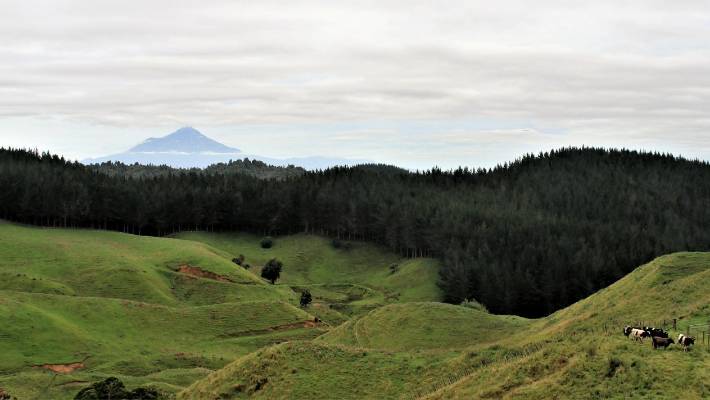Retiring marginal land
What
Marginal land is land that has little or no agricultural value. Marginal land has little potential for profit and often has poor soil or other undesirable characteristics such as excessive steepness.
Land can be defined as marginal or underutilised due to a range of factors.
These factors include:
- Land instability
- Low returns/commodity prices on current land use
- Physical limitations - low soil fertility or inaccessibility to water
- Isolation
Why
Retiring marginal land can conserve erosion prone hills that can’t cope with high numbers of heavy stock. Sediment runoff from hill country contributes to poor water quality further down the catchment. Retiring land helps with sediment reduction into waterways and often enables a farm to be managed more effectively.
The most common option for afforestation of erosion-prone land is the establishment of pine trees. Pinus has been identified as being very effective for reducing soil erosion in line with indigenous vegetation. Full afforestation reduces soil erosion by around 90%, relative to open pasture (Dymond et al., 2010). Accordingly, this strategy has been widely implemented. One example is the East Coast Forestry Project which has afforested over 40,000 ha of land (MPI, 2014), while around 15,000 ha of land has been afforested within the Sustainable Land Use Initiative programme. The Afforestation Grant Scheme also aims to increase forest planting between 2015 and 2020 by 15,000 ha, to help build carbon storage, reduce soil erosion, and increase regional development.

Image Source: Stuff.co.nz

Image Source: Farm Forestry New Zealand
Especially in the North Island, species to consider for planting on marginal land include manuka and kanuka. Manuka has the capacity to decrease soil erosion by around 65%, relative to adjacent pasture (Marden and Phillips, 2015). Kanuka (Kunzea ericoides) has the potential to decrease erosion by up to 90%, given its larger leaf area and root system compared with manuka. The regeneration of native forest, especially on marginal land, can provide a broad range of ecosystem services (McAlpine and Wotton, 2009). It also decreases soil erosion by around 90%, relative to open pasture (Dymond et al., 2010, 2014). However, it provides no income for landholders, which decreases its attractiveness to some.
There is also growing interest in native timber production, with evaluations for kauri (Agathis australis) (Hock et al., 2014), silver beech (Nothofagus menziesii) (Evison et al., 2012), and totara (Podocarpus totara) (Bergin, 2000; Cown and Bergin, 2009). These options diversify the national timber portfolio and enhance the indigenous values of marginal hill country.
References
Cown, D., Bergin, D., & Quinlan, P. (2009). Totara–a growing resource. New Zealand Tree Grower, 30(4), 23-24.
Dymond, J. R. (2010). Soil erosion in New Zealand is a net sink of CO~2~. Earth Surface Processes and Landforms, 35(15), 1763-1772.
Dymond, J.R., Herzig, A., Basher, L., Betts, H.D., Marden, M., Phillips, C.J., Ausseil, A.G.E., Palmer, D.J., Clark, M. and Roygard, J. (2016). Development of a New Zealand SedNet model for assessment of catchment-wide soil-conservation works. Geomorphology, 257, 85-93.
Evison, D., Easdale, T., Mason, E., & Sewell, A. (2012). Economics of managing New Zealand silver beech for timber and carbon (No. 1170-2016-93282).
Fernandez, M. A. (2017). Adoption of erosion management practices in New Zealand. Land Use Policy, 63, 236-245.
Hock, B., Heaphy, M., Harrison, D., & Payn, T. (2014). Nga Aho Rangahau o Maniapoto Forest Opportunities. New Zealand Forest Research Institute (Trading as Scion): Rotorua, New Zealand, 27.
McAlpine, K. G., & Wotton, D. M. (2009). Conservation and the delivery of ecosystem services. Science for Conservation, 295, 5-81.
Monaghan, R., Manderson, A., Basher, L., Spiekermann, R., Dymond, J., Smith, C., Muirhead, R., Burger, D. and McDowell, R. (2021). Quantifying contaminant losses to water from pastoral landuses in New Zealand II. The effects of some farm mitigation actions over the past two decades. New Zealand Journal of Agricultural Research, 1-25.
Phillips, C., Marden, M., & Basher, L. (2015). Forests and erosion protection–getting to the root of the matter. NZ Journal of Forestry, 60(2), 11.